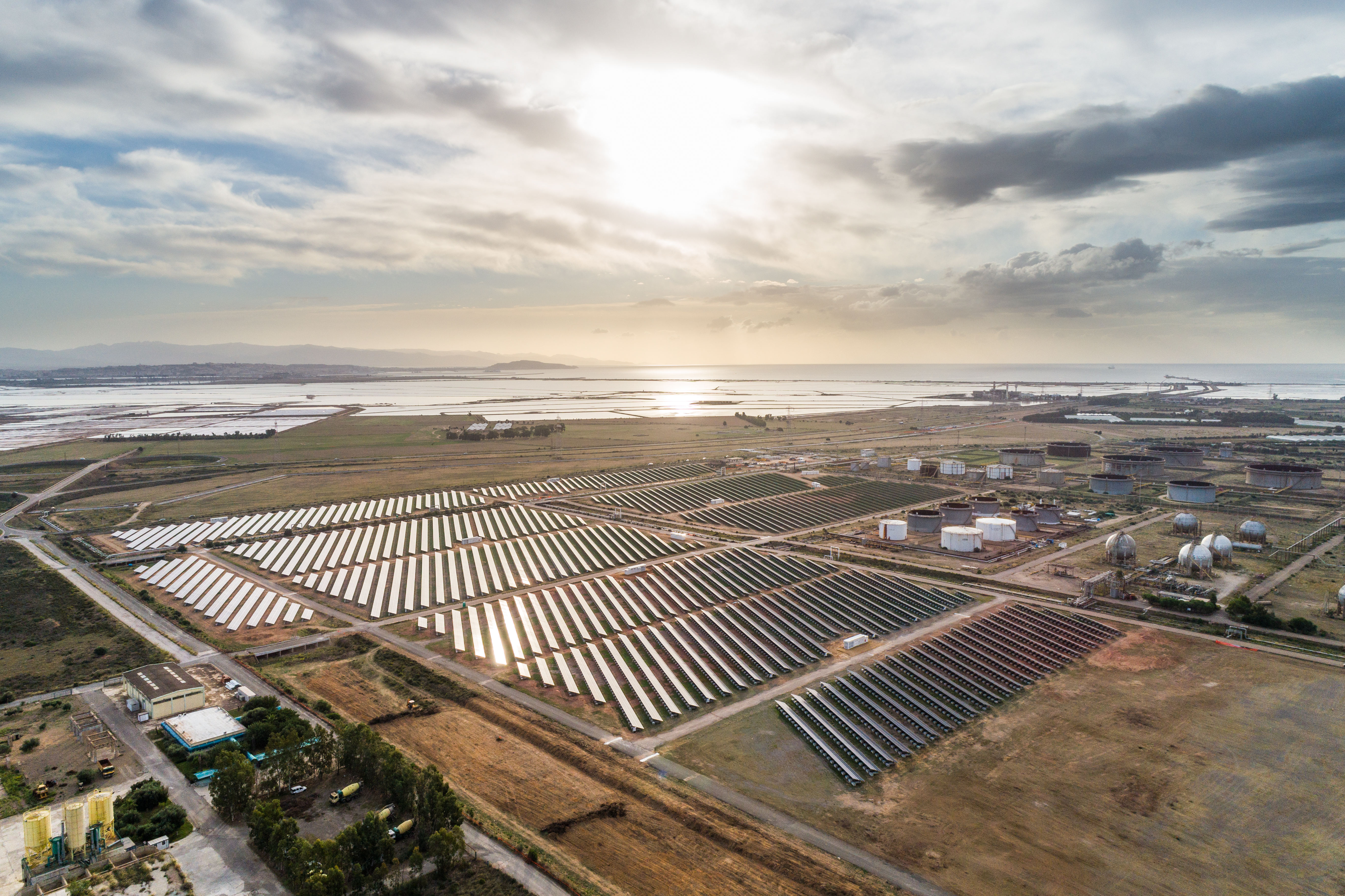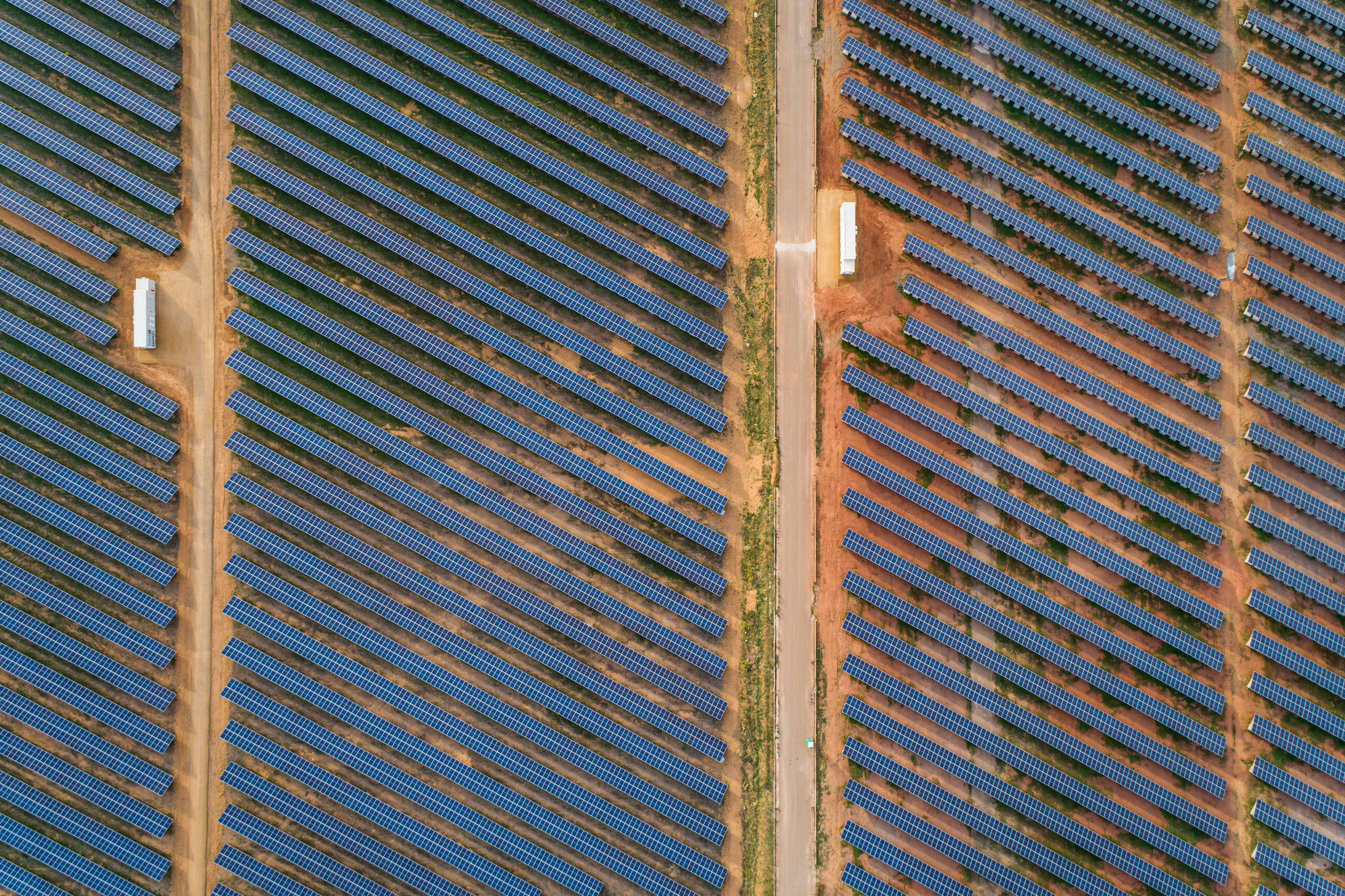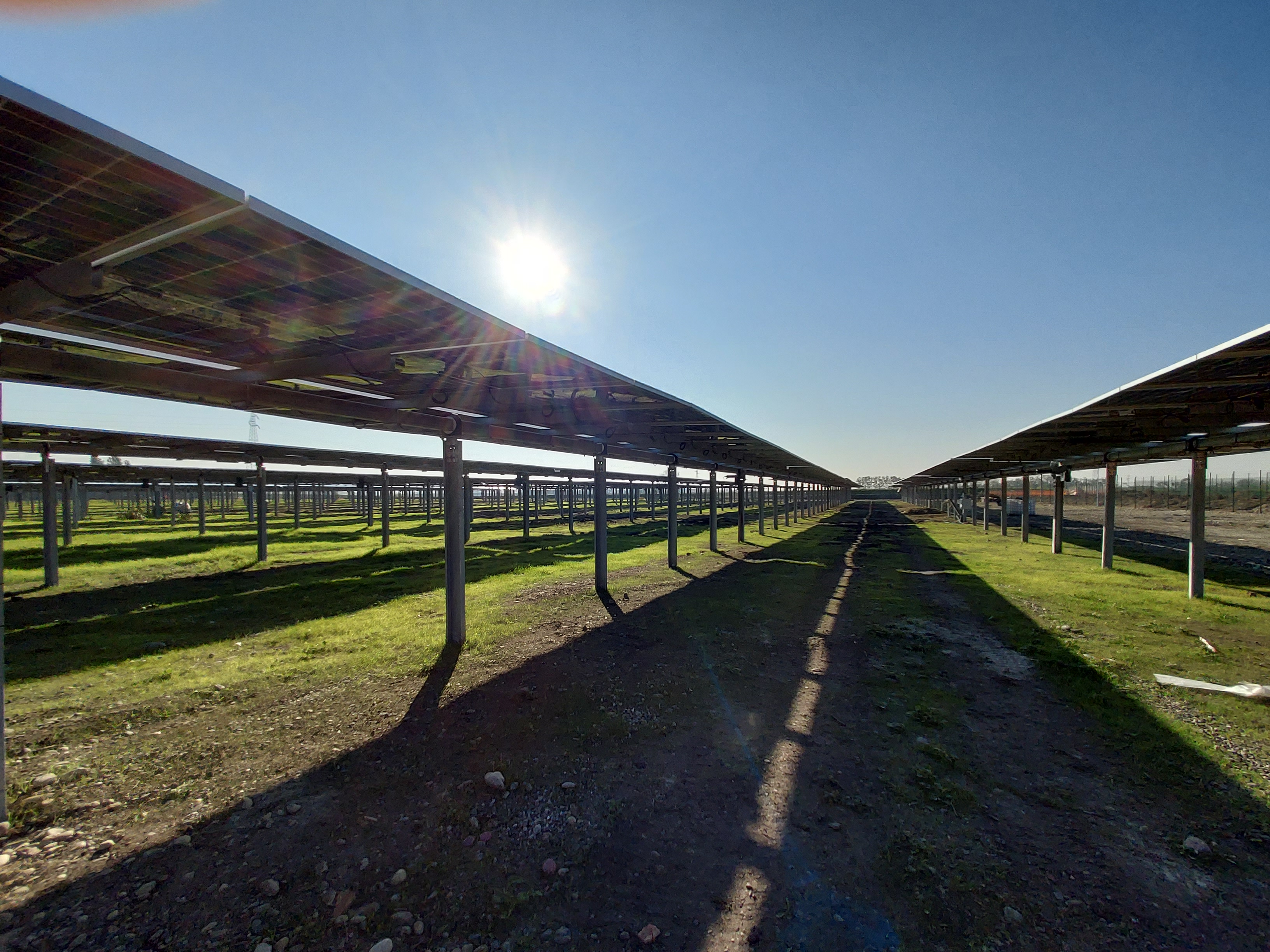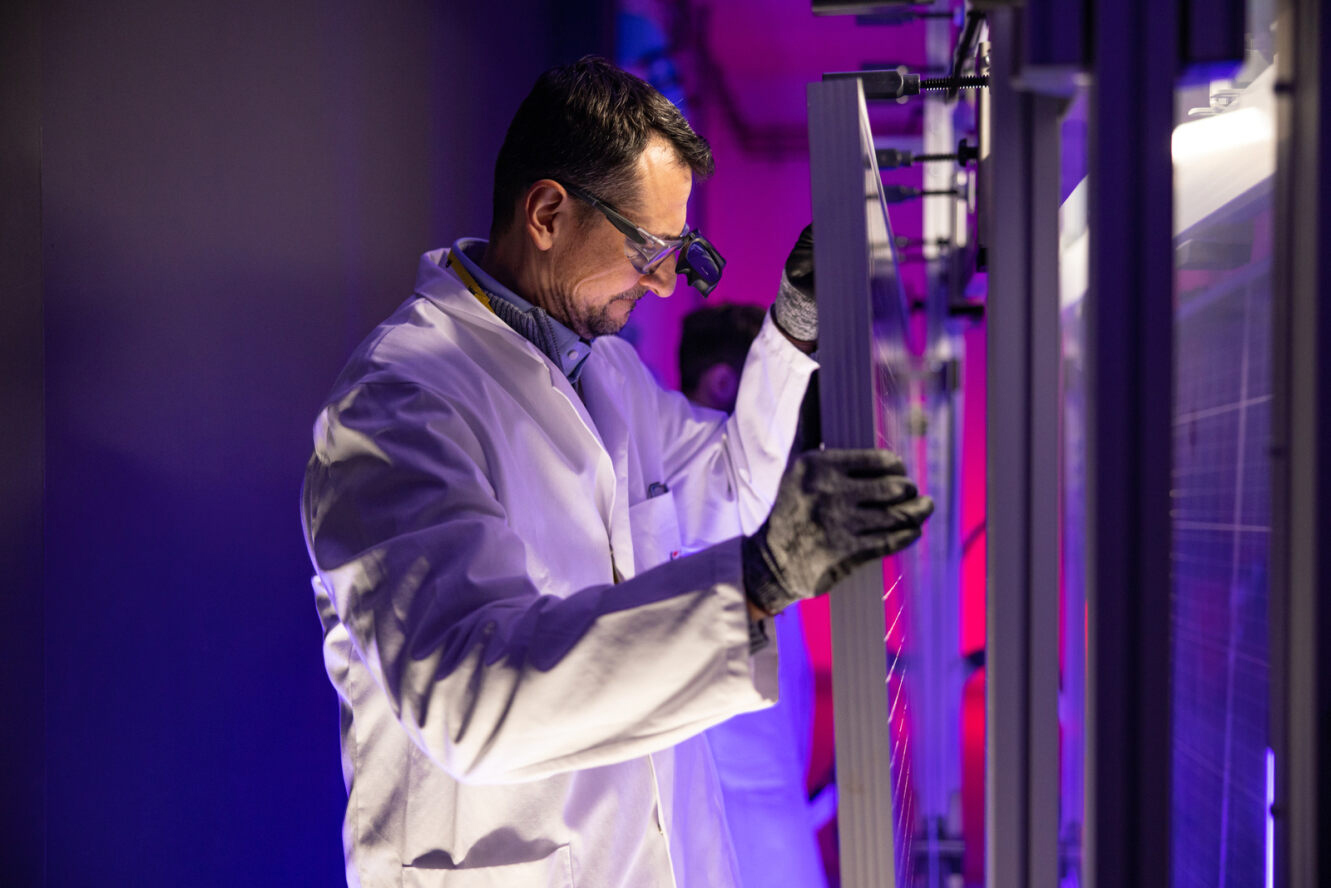1/5
The striking view from the top of a solar farm, where sunlight reflects off the surface of the panels. The orientation and inclination of the panels, or modules, are always chosen according to the available space and area with the aim of maximizing power generation. There are two types of fixing and supporting structures: fixed or motorized (tracker). What if it is raining or the sky is cloudy, as in the picture? The sun's rays still reach the surface of the panels, albeit with less intensity, meaning that some energy is produced even when it is foggy or raining. All plants are monitored remotely, allowing you to see key production and performance parameters in real time.








